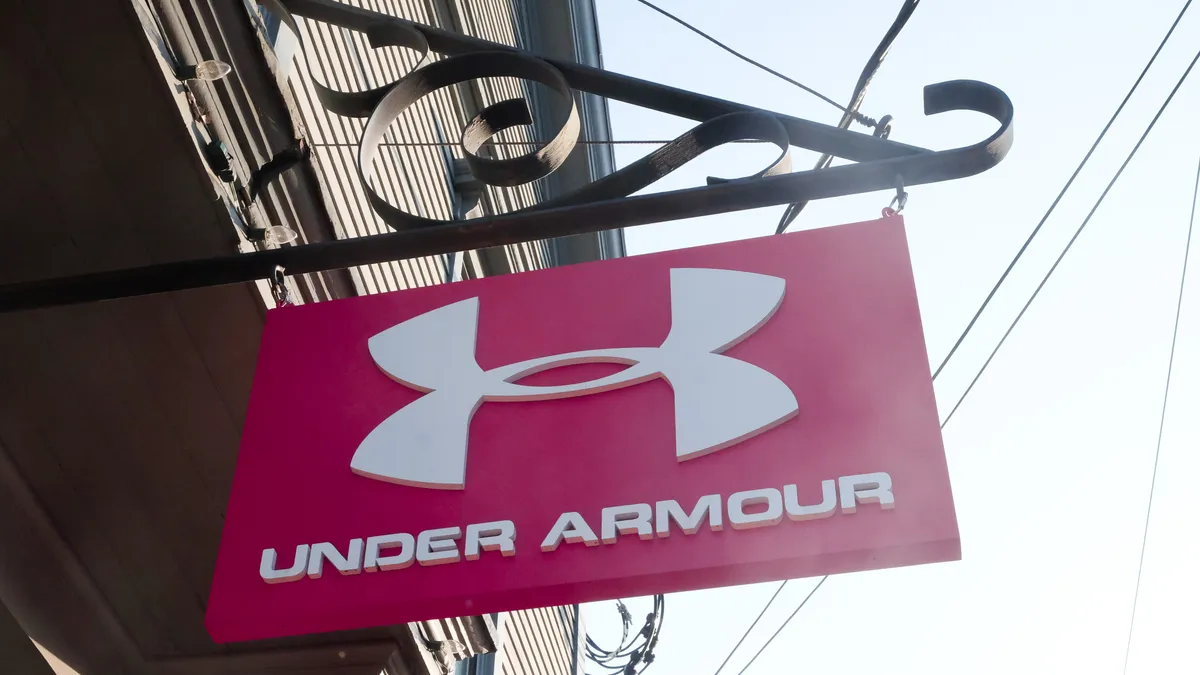Dive Brief:
-
Turnaround is still the word of the day at Under Armour, with CEO Patrik Frisk saying on a fourth quarter conference call that the brand will return to profitability in 2021. The company beat its own expectations, as well as those of analysts, as it works to rebalance its cost structure and move toward stronger growth.
-
As part of its previously announced restructuring plans, the retailer recorded $473 million in related charges for the year, with $62 million in the fourth quarter alone. Those are expected to eventually total between $550 million and $600 million, but should be done by the first half of 2021, and mostly in Q1, Chief Financial Officer David Bergman said.
-
Under Armour remains committed to exiting between 2,000 and 3,000 wholesale doors, a two- to three-year journey that will start in the back half of the year, according to Frisk, and will leave the retailer with closer to 10,000 wholesale doors. With that comes a focus on DTC, which grew 11% in the quarter thanks to a 25% rise in e-commerce.
Dive Insight:
In the midst of sweeping changes to its business, including shifting from wholesale to a more DTC-focused model, selling off its MyFitnessPal business, cutting jobs and launching a new brand with Steph Curry, Under Armour is on a path back to profitability, executives said on Wednesday.
The company expects to return to a double-digit operating margin as a result of its restructuring, and released an outlook for 2021 that includes high-single-digit revenue growth. "Our main objective is to unburden ourselves of commitments made when we expected to be a bigger company than we are now," Frisk said.
Under Armour's cost structure was also "built for a much bigger business," Bergman said, and the company has been working diligently on rebalancing that. Thanks to the sale of MyFitnessPal, Under Armour ended Q4 with $1.5 billion in cash and equivalents with no borrowings outstanding on its credit facility.
Under Armour's Q4 performance
| Metric | Q4 | YoY |
|---|---|---|
| Revenue | $1.4 billion | -3% |
| Net income | $184 million | 1,305% |
| Operating income | $56 million | -25% |
| Gross profit | $694 million | 2% |
| Gross margin | 49% | 210 basis points |
Source: Under Armour press release
The shift to profitability also includes the shift to a more DTC-focused model (pursued by rival Nike as well), as Under Armour looks to move toward a more full-price, premium positioning with its consumers.
"We believe [Under Armour] has taken the right steps in cutting costs, improving inventory control, altering the distribution mix and increasing digital investments," Jane Hali & Associates analysts wrote in an emailed client note. However, the firm remains concerned about Under Armour's "lack of resonance with consumers."
"[Under Armour]'s product continues to be performance-driven with little design detail. Many consumers buy athletic wear for sports as well as for every day," the analysts wrote. "By focusing completely on performance, the company is engaging a narrower audience."
The athleisure question is never one that Under Armour sees itself answering, doubling down instead on its performance-based positioning. Indeed, when asked about it on this most recent conference call, Frisk said there has been a rise in the number of consumers focused on personal fitness and wellness, with consumers willing to spend more on performance products that will make them better. Frisk believes consumers are "going there more often than before."
Athleisure as a category isn't going anywhere, though, and is key to the success of sportswear brands, according to a recent report from McKinsey and the World Federation Sporting Goods Industry. "Given a more competitive landscape, winning sporting goods brands over the coming year will need to find ways to outperform fashion brands in the growing athleisure segment," the firms said in a joint report.













